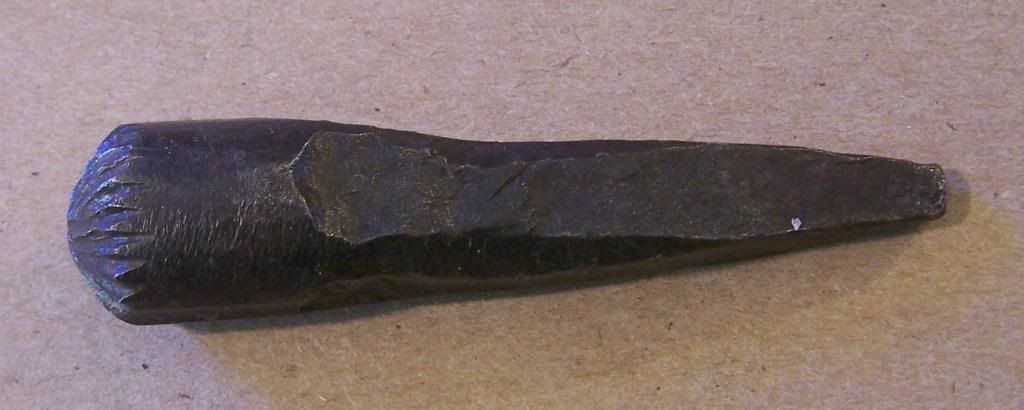Guys,
Here is an interesting tool. It is from a collection of 18th c. gunsmith tools that may be of interest to those who really do make guns. Perhaps we can vote on the original use of the tool. here are the photos.


1. My friend Griz says that it is an 18th c. ear wax remover, he says that it would probably be easier to use than the 5/8 twist drill he normally uses at home.
2. It could be used as a barrel muzzle crown tool. This actually was my first guess. The tool was made to cut metal using a brace. The teeth are raised by a chisel rather than being cut into the surface. The tiny uncut space at the tool center is lower than the teeth. I no longer think that this was the purpose of the tool. The angle of the cut chamfer seems to be too flat for a good barrel muzzle crown. It should be closer to 45 degrees. And also it is too small in diameter for many bores over 0.50 cal. Also if it were to be a barrel crown tool there would be no reason to form the teeth so close to the tool centerline, (like for crowning a 0.22 cal muzzle)
3. I believe that the tool was used as a flashpan grinder to cut that hollow in the flashpan. For those who have ever actually made a flintlock, the pan hollow is very interesting to cut by hand (read drive you nuts). After the blank pan is attached to the lockplate most of the pan hollow can be cut using round files cutting from the barrel side on the pan. Of course, this leaves the end away from the barrel unformed. This tool seems to be just about right to finish cutting the entirepan hollow. The diameter and curve really fits a flintlock flashpan.
Such a tool would leave obvious circular marks in the pan on the side away from the barrel and linear marks on the side close to the barrel. I have never seen such marks, however, all of the original flintlocks I have owned have been shot ten bazillion times and any such marks have long been corroded away. It would be really interesting if anyone who has a more pristine flintlock could see such marks in the pan.
Let me know what you guys think on this tool. No, Griz, it is not a nose picker either.
Jim Everett
P.S. HDTDT - How Did They Do That

